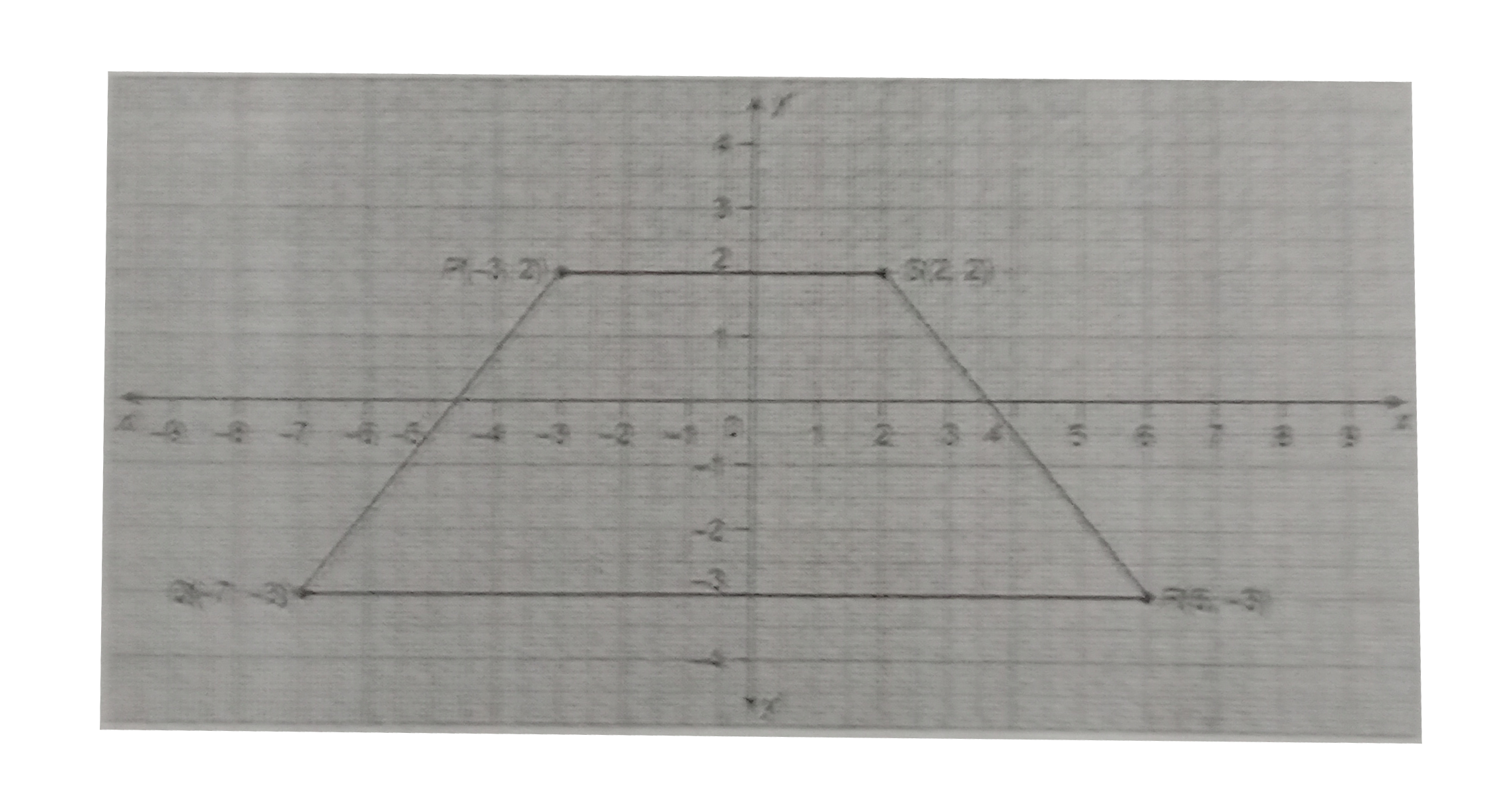Plot the following points and write the name of the figure obtained by joining, them in order p(-3,2), Q(-7,-3), R(6,-3) and S(2,2).
Let X'OX and Y'OY be the co-ordinate axes. Then, the four points may be plotted as given below :

Topper's Solved these Questions
- CO-ORDINATE GEOMETRY BOOK - NAGEEN PRAKASHANCHAPTER - CO-ORDINATE GEOMETRY EXERCISE - Revision Exercise
8 Videos
- CO-ORDINATE GEOMETRY BOOK - NAGEEN PRAKASHANCHAPTER - CO-ORDINATE GEOMETRY EXERCISE - Exercise
8 Videos
- CO-ORDINATE GEOMETRY BOOK - NAGEEN PRAKASHANCHAPTER - CO-ORDINATE GEOMETRY EXERCISE - Exercise
8 Videos
- CIRCLE BOOK - NAGEEN PRAKASHANCHAPTER - CIRCLE EXERCISE - Revision Exercise (long Answer Questions )
5 Videos
- CONSTRUCTIONSBOOK - NAGEEN PRAKASHANCHAPTER - CONSTRUCTIONSEXERCISE - EXAMPLE SOLUTION.
19 Videos
Similar Questions
Knowledge Check
The triangle joining the points P(2,7), Q(4,-1), R(-2,6) is
Ascalene triangleBIsosceles triangleCright angled triangleDequilateral traingleThe points P(3,2,4),Q(4,5,2),R(5,8,0)andS(2,−1,6) are
Avertices of a rhombus which is not a squareBnon-coplanarCcollinearDcopanar but not collinearThe point P (3,2,4),Q(4,52),R(5,8,0)andS(2,−1,6) are :
AVertices of a rhombus which is not a squareBNon coplanarCCollinearDCoplanar but not collinear
Plot the following points on a graph sheet. Verify if they lie on a line
P(1,1) , Q(2,2) ,R(3,3) ,S(4,4)
View SolutionPlot the given points on a graph sheet and check if they lie on a straight line. If not, name the shape they form when joined in the given order.
(i) A(0, 2), B(0,3.5), C(0, 5) and D(0, 6)
(ii) P(1, 3), Q(1, 5), R(3, 3) and S(3, 5)
(iii) E(4, 5), F(5, 5), G(5, 7) and H(6, 5)
(iv) L(2, 0), M(2, 3), N(0, 3) and O(0, 0)
(v) J(4, 3), K(6, 1), L(6, 5) and M(4, 7)
View SolutionWrite the position vector of the mid-point of the vector joining the points P (2, 3, 4) and Q (4, 1,-2).
View SolutionPlot the following points on coordinate plane P(3,1),Q(8,1),R(8,−3),S(3,−3)
View SolutionThe lines joining the points (1, 2, 3), (4, 5, 7) and (-4,3,-6), (2, 9, 2) are
View Solution
